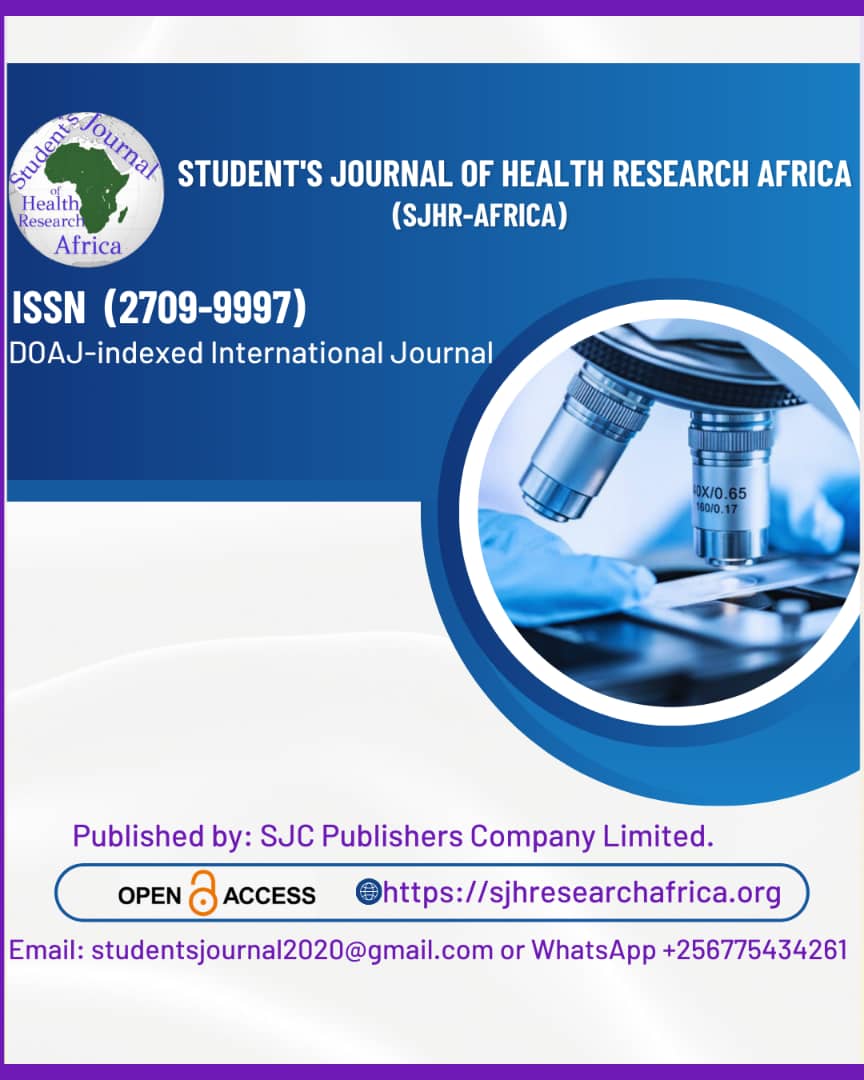Mortality predictors and early outcomes in very low birth weight infants: A retrospective cross-sectional study.
DOI:
https://doi.org/10.51168/sjhrafrica.v6i9.2173Keywords:
Very low birth weight, neonatal mortality, respiratory distress syndrome, sepsis, predictorsAbstract
Background:
Very low birth weight (VLBW) infants, defined as those weighing under 1500 g, are highly vulnerable to morbidity and mortality, particularly in low-resource settings. Despite advances in neonatal care, outcomes remain inconsistent, with respiratory distress syndrome (RDS), sepsis, and prematurity as major contributors to mortality.
Aim:
To evaluate short-term outcomes and identify mortality predictors among VLBW infants admitted to the NICU of Katihar Medical College, Bihar.
Methods:
This retrospective descriptive cross-sectional study was conducted over one year (November 2023–October 2024) and included 60 VLBW infants. Data on demographic characteristics, perinatal factors, complications, and outcomes were collected from hospital records and analyzed using SPSS version 23.0. The Chi-square and t-tests were used for univariate analysis, and logistic regression identified independent predictors of mortality.
Results:
The mean birth weight and gestational age were 1225 ± 180 g and 30.8 ± 2.4 weeks, respectively. Survival was achieved in 42 infants (70%), while 18 (30%) died during NICU stay. Mortality was higher among infants with birth weight <1000 g (66.7%), gestational age <32 weeks (38.9%), RDS (47.4%), and sepsis (54.5%) (p<0.05). Logistic regression identified birth weight <1000 g (OR 4.3; p=0.007), RDS (OR 3.9; p=0.012), and sepsis (OR 3.1; p=0.031) as independent mortality predictors.
Conclusion:
Extremely low birth weight, respiratory distress syndrome, and sepsis are key determinants of mortality among VLBW infants. Early recognition and targeted management of these risk factors, along with strengthened neonatal intensive care services, are essential to improve survival outcomes.
Recommendations:
Early identification of risk factors, timely surfactant therapy, strict infection control, and improved NICU infrastructure can help reduce mortality in VLBW infants.
References
Basu S, Rathore P, Bhatia BD. Predictors of mortality in very low birth weight neonates in India. Singapore Med J. 2008;49(7):556-60.
Ingemyr K, Smyth R, Horn AR, Ballot DE, Harrison MC, Tooke L, et al. Factors influencing survival and short-term outcomes of very low birth weight infants: a retrospective review. Front Pediatr. 2022;10:930338. https://doi.org/10.3389/fped.2022.930338
Chawla D, Kumar P, Kumar N, Bhatt GC, Sankar MJ. Survival of extremely low-birth-weight neonates in India. Indian Pediatr. 2023;60(5):421-6. https://doi.org/10.1007/s12098-023-04479-y
Sankar MJ, Agarwal R, Kumar P. Efficacy and safety of surfactant replacement therapy for neonatal respiratory distress syndrome in developing countries. Pediatr Pulmonol. 2016;51(9):1016-28.
Chun J, Sung SI, Park WS. Prophylactic versus early rescue surfactant treatment in preterm infants: a comparative study. J Korean Med Sci. 2017;32(8):1288-96. https://doi.org/10.3346/jkms.2017.32.8.1288
Bansal A, Zodpey SP, Balasubramaniam S, Sinha S, Sharma P. Comparison of outcomes of very-low-birth-weight babies in India: a prospective cohort. J Obstet Gynecol Neonatal Nurs. 2018;47(4):481-9.
Yen TA, Chang YC, Tsai LY, Hsieh WS, Chou HC, Tsao PN. Short-term outcome of pulmonary hemorrhage in very low birth weight infants. J Perinatol. 2013;33(3):188-92. https://doi.org/10.1016/j.pedneo.2013.04.005
Patel S, Sharma D, Choudhary M, Dabi D, Choudhary J. Mortality and morbidity of very low birth weight infants in India: findings from an observational study. Indian J Child Health. 2019;11(2):89-93.
Zhang J, Sun K, Zhu Y, Xu F, Qu Y, Mu D. Mortality and outcomes of very low birth weight infants: a multicenter study from mainland China. Transl Pediatr. 2019;8(3):195-205.
Wang Y, Li Z, Chen C, Chen Y, Zou H, Liang J, et al. Mortality and morbidity of very low birth weight infants in China: a multicenter study. Chin Med J. 2020;133(17):2029-36.
Anand VR, Harikumar S, Jaya DS, Paul VK. Outcome of very low birth weight infants in a tertiary care center in South India. Indian J Pediatr. 2021;88(5):456-62.
Duarte JL, Figueiredo S, Barbosa AP, da Silva M. Factors correlated with mortality of very low birth weight infants in Brazilian neonatal units. J Pediatr (Rio J). 2020;96(3):310-7.
Mokuolu OA, Mokuolu BO, Adetiloye AA, Oludare O, Ezeaka VC, Olanrewaju DM, et al. Factors influencing mortality of very low birth weight infants in Nigeria: a multicenter study. Afr Health Sci. 2022;22(1):123-31.
Downloads
Published
How to Cite
Issue
Section
License
Copyright (c) 2025 Zahir Abbas, Ghazi Sharique Ahmad

This work is licensed under a Creative Commons Attribution-NonCommercial-NoDerivatives 4.0 International License.





















